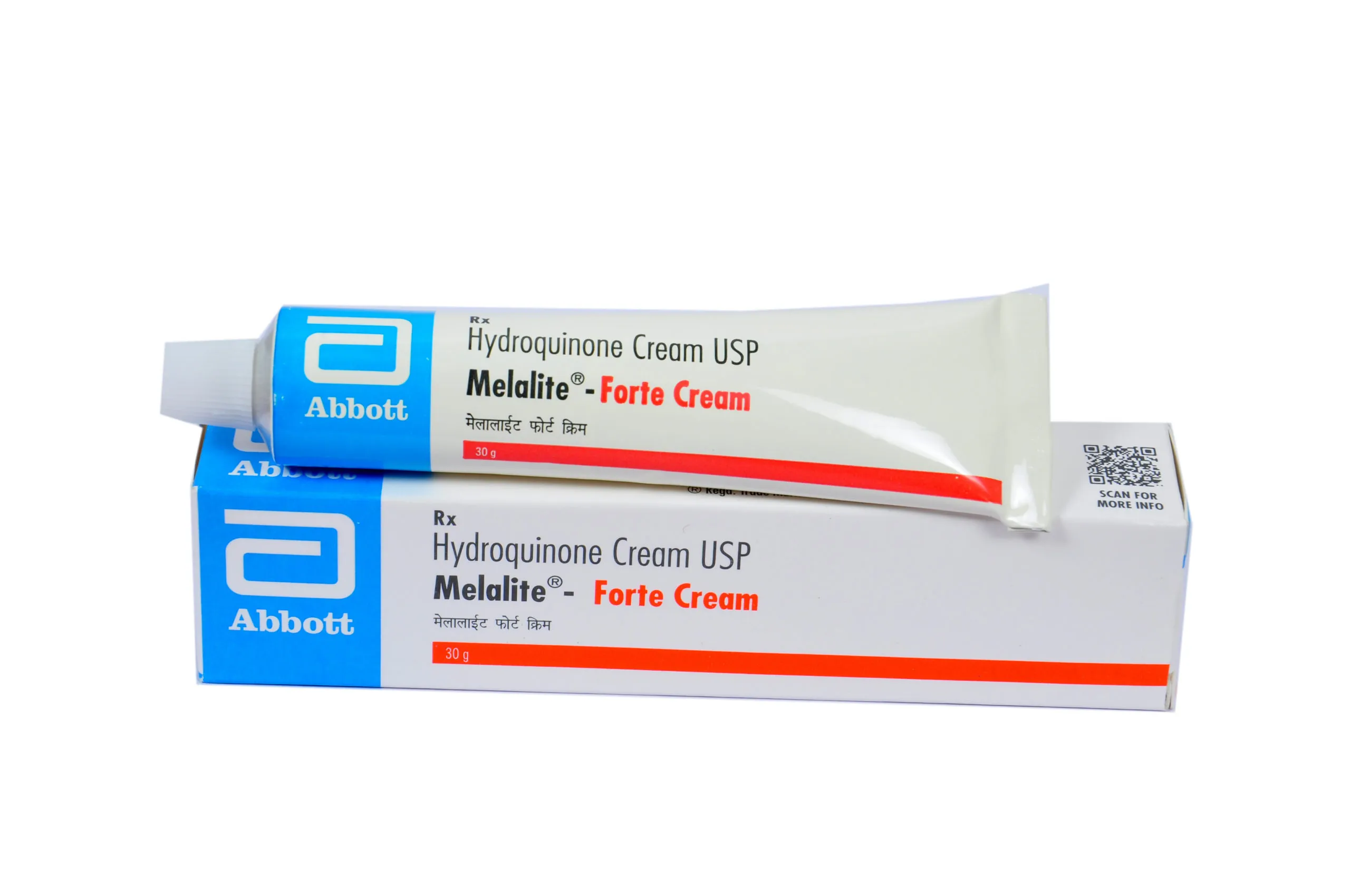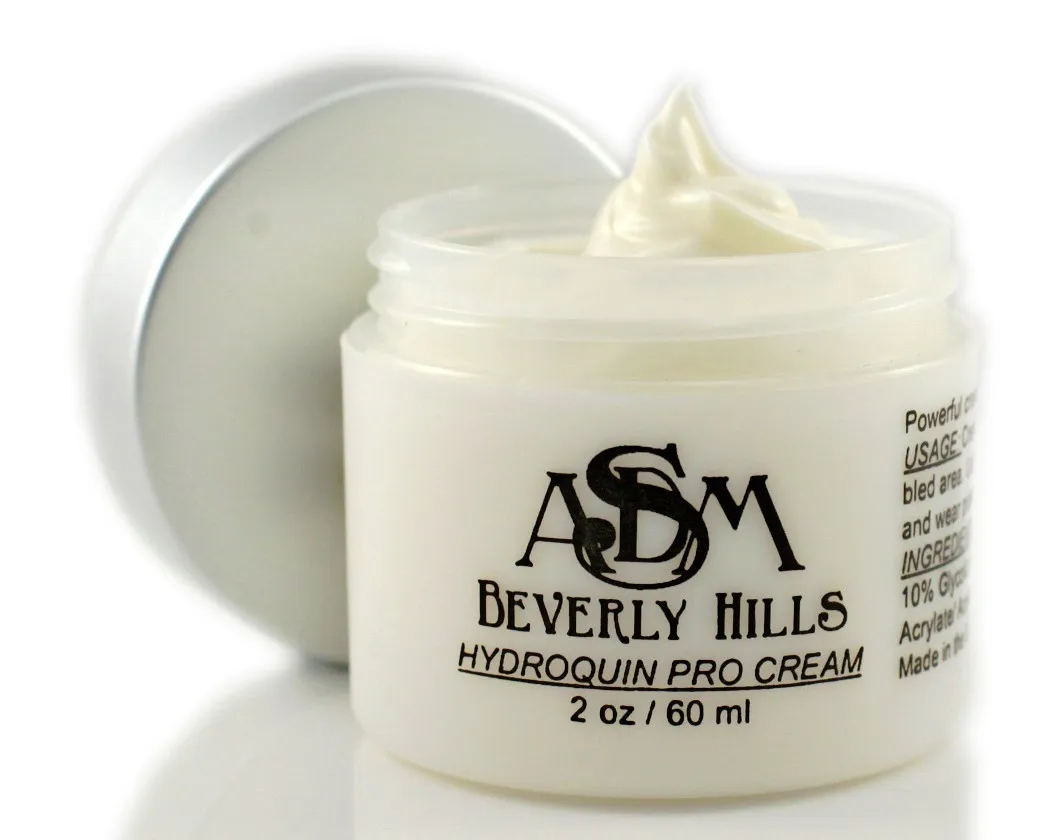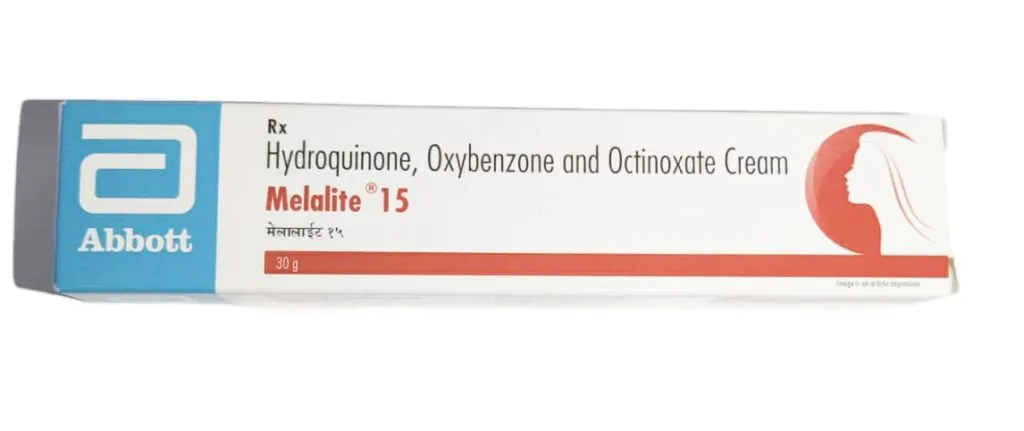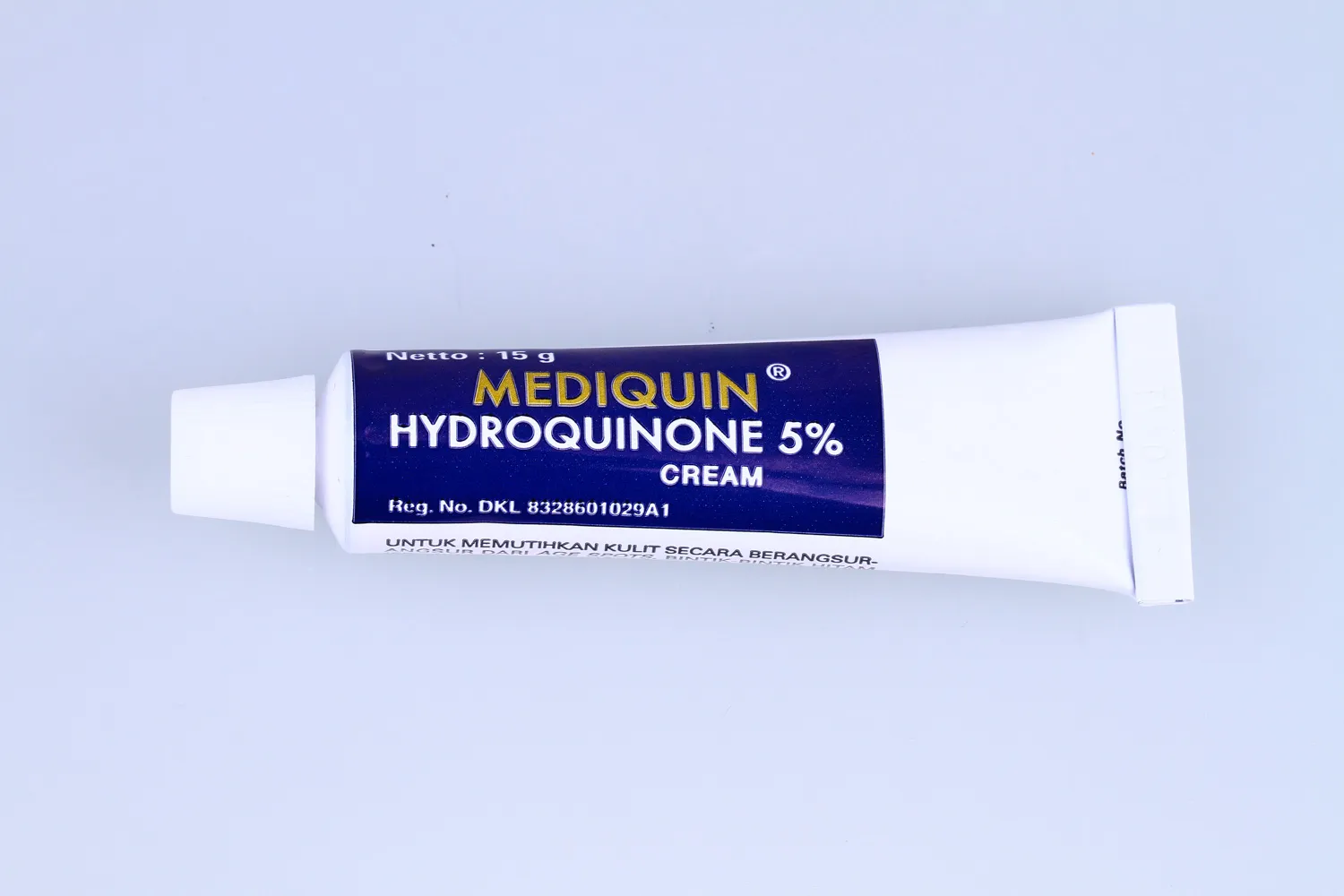What is Hydroquinone Skin Whitening
Hydroquinone is a topical medication widely used in dermatology for skin whitening or lightening. It works by decreasing the amount of melanin, the pigment responsible for skin color. This reduction can help to fade away dark spots, age spots, and other forms of hyperpigmentation. The cream is available in various concentrations, typically ranging from 2% to 4% when prescribed by a dermatologist. It’s important to note that hydroquinone is a powerful drug and should be used under the guidance of a healthcare professional. This ensures proper application and minimizes potential side effects. Hydroquinone is often prescribed to treat skin conditions like melasma, post-inflammatory hyperpigmentation (PIH), and freckles. It’s a popular choice for those seeking to even out their skin tone and reduce the appearance of uneven pigmentation. The cream is applied directly to the affected areas of the skin, and regular use as directed can lead to visible results within weeks or months.
How Hydroquinone Works for Skin Whitening
Hydroquinone’s primary mechanism of action involves inhibiting an enzyme called tyrosinase. Tyrosinase is essential for the production of melanin. By blocking this enzyme, hydroquinone reduces the amount of melanin produced by melanocytes, the cells responsible for skin pigmentation. This leads to a decrease in the overall pigment in the skin, resulting in a lighter complexion or the fading of dark spots. The process is gradual, as existing melanin in the skin must naturally shed through the skin’s normal exfoliation process. The efficacy of hydroquinone depends on several factors, including the concentration of the cream, the individual’s skin type, and the specific skin condition being treated. It is most effective for treating conditions characterized by excessive melanin production, such as melasma or post-inflammatory hyperpigmentation. Consistent use, as prescribed by a healthcare professional, is key to achieving desired results. It’s crucial to understand that hydroquinone does not permanently alter skin color; once treatment ceases, melanin production can resume, and pigmentation may return.
The Science Behind Hydroquinone Cream

The science behind hydroquinone involves its specific interaction with melanocytes, the pigment-producing cells in the epidermis. Hydroquinone penetrates the skin and directly targets tyrosinase, an enzyme that catalyzes the conversion of tyrosine to melanin precursors. By inhibiting tyrosinase, hydroquinone effectively slows down the production of new melanin. This mechanism is what makes hydroquinone a potent depigmenting agent. Furthermore, hydroquinone may also damage melanosomes, which are the cellular structures within melanocytes where melanin is synthesized. The damaged melanosomes are less effective at producing pigment, leading to a reduction in skin darkening. The concentration of hydroquinone in the cream is a key factor in its effectiveness, with higher concentrations often producing faster results. However, this also increases the potential for side effects. The effectiveness of hydroquinone can also be enhanced when combined with other treatments, such as retinoids or chemical peels, which can improve skin cell turnover and penetration of the active ingredient.
Hydroquinone Application Techniques
Applying hydroquinone cream correctly is vital for maximizing its effectiveness and minimizing the risk of side effects. Before applying the cream, cleanse and gently pat dry the skin. Apply a thin layer of hydroquinone cream to the affected areas only, avoiding the surrounding normal skin. A pea-sized amount is usually sufficient for the entire face. Gently rub the cream into the skin until it is absorbed. It is generally recommended to apply hydroquinone once or twice daily, as directed by a dermatologist. During the day, it is crucial to protect the skin from sun exposure by using a broad-spectrum sunscreen with an SPF of 30 or higher. Sun exposure can worsen hyperpigmentation and decrease the effectiveness of hydroquinone. Continue using the cream as prescribed and do not exceed the recommended duration of treatment without consulting your healthcare provider. Consistent application is key to seeing noticeable results, but it’s important to monitor your skin for any signs of irritation or adverse reactions.
Proper Application of Hydroquinone Cream
Proper application is crucial for both efficacy and safety. Always start with clean, dry skin. Wash your face or the affected area with a gentle cleanser and pat it dry with a soft towel. Use a small amount of the cream, typically a pea-sized portion, and apply it only to the areas with hyperpigmentation, avoiding the surrounding normal skin. Rub the cream gently into the skin until it is fully absorbed. It’s usually recommended to apply hydroquinone cream once or twice a day, or as directed by your dermatologist. Always wash your hands thoroughly after applying the cream to prevent accidental spread. During the day, always wear a broad-spectrum sunscreen with an SPF of 30 or higher to protect your skin from sun damage. Sun exposure can counteract the effects of hydroquinone and potentially worsen the condition. Be patient, as results may take several weeks or months to become apparent. Consistency in application and diligent sun protection are key to achieving the best results.
Best Practices for Hydroquinone Use

To maximize benefits and minimize risks, follow these best practices. Always consult a dermatologist before starting hydroquinone treatment to determine if it’s suitable for your skin type and condition. Use only as directed, and do not exceed the prescribed dosage or duration. Protect your skin from sun exposure by using a broad-spectrum sunscreen daily, even on cloudy days. Combine hydroquinone with other treatments, such as retinoids or chemical peels, if recommended by your dermatologist. This can enhance its effectiveness. Regularly monitor your skin for any signs of irritation, such as redness, itching, or burning. If any adverse reactions occur, stop using the cream and consult your healthcare provider. Avoid using hydroquinone on irritated or broken skin. Store the cream in a cool, dry place, away from direct sunlight. Be patient, as it may take several weeks or months to see noticeable results. Stick to your skincare routine consistently to achieve the best outcome. Schedule regular follow-up appointments with your dermatologist to assess your progress and adjust the treatment as needed.
Potential Side Effects of Hydroquinone
Like all medications, hydroquinone can cause side effects. Common side effects include mild skin irritation, such as redness, dryness, itching, and burning at the application site. These side effects are usually temporary and subside as the skin adjusts to the medication. Less common, but more serious side effects, include ochronosis, a condition where the skin turns a blue-black color due to the buildup of hydroquinone. Another potential risk is contact dermatitis, an allergic reaction that can cause redness, swelling, and blisters. Prolonged use of hydroquinone, especially at high concentrations, can also increase the skin’s sensitivity to the sun. If you experience severe side effects, such as significant swelling, blistering, or changes in skin color, discontinue use and consult your dermatologist immediately. Always inform your healthcare provider about any side effects you experience during treatment. Be vigilant in monitoring your skin for any unusual changes and seek prompt medical attention if necessary.
Managing Side Effects of Hydroquinone
Managing side effects is an essential part of hydroquinone treatment. If you experience mild irritation, you can soothe the skin by applying a gentle, fragrance-free moisturizer. Avoid using harsh skincare products or exfoliants that can further irritate the skin. Reduce the frequency of application if the irritation is severe; for example, switch from twice daily to once daily, or even every other day, as recommended by your dermatologist. Always wear a broad-spectrum sunscreen with an SPF of 30 or higher to protect the skin from sun exposure, which can worsen irritation. If you develop more severe side effects, such as blistering or significant redness, stop using hydroquinone immediately and consult your healthcare provider. They may recommend a different treatment or adjust the dosage. In some cases, your dermatologist may prescribe a topical corticosteroid to reduce inflammation and irritation. Regular follow-up appointments with your dermatologist are crucial for monitoring your skin’s response to the medication and managing any side effects promptly.
Who Should Avoid Hydroquinone

While hydroquinone can be effective for many, it isn’t suitable for everyone. Individuals with sensitive skin should exercise caution and consult a dermatologist before use, as it can cause irritation. Pregnant or breastfeeding women should avoid hydroquinone due to potential risks. It’s crucial to consult with a healthcare provider to assess whether hydroquinone is safe during pregnancy or breastfeeding. People with certain skin conditions, such as eczema or rosacea, should also consult with a dermatologist, as hydroquinone may worsen these conditions. Those with a history of allergic reactions to hydroquinone or any of its ingredients should avoid the medication. Hydroquinone should not be used on irritated or broken skin. Always inform your dermatologist about any existing skin conditions or medications you are taking to ensure hydroquinone is a safe and appropriate treatment option. A thorough consultation will help to identify any potential risks and determine the best course of action.
Alternatives to Hydroquinone Skin Whitening
Several alternatives to hydroquinone are available for skin whitening, offering different mechanisms and potential side effects. Retinoids, such as tretinoin, can improve skin cell turnover and reduce hyperpigmentation. Azelaic acid is another option that inhibits tyrosinase and has anti-inflammatory properties. Kojic acid, derived from fungi, can also lighten skin, though it may cause irritation in some individuals. Vitamin C, a potent antioxidant, can brighten the skin and reduce melanin production. Chemical peels, such as glycolic acid peels, can exfoliate the skin and promote cell turnover, thereby reducing the appearance of dark spots. Laser treatments are also available to target and remove hyperpigmentation. Always consult a dermatologist to determine the most appropriate alternative based on your skin type, condition, and desired outcome. The best approach often involves a combination of treatments and a comprehensive skincare routine. Be sure to discuss the potential risks and benefits of each alternative with your healthcare provider to make an informed decision.
